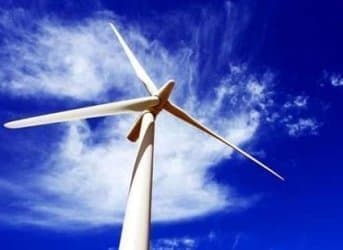Global rankings place the United States in the top spot for investment in clean energy in 2011, with over $48 billion in energy sector investments, including solar, biofuels and wind energy, up from $34 billion the year before.
The US now has a total installed renewable energy capacity of 93 GW, which includes the addition of 6.7 gigawatts (GW) of wind and more than 1 GW of solar energy – the equivalent necessary to power over 800,000 homes.
China, which was bumped to second place, saw investment in clean energy increase by $0.5 billion since 2010, for a total of $45.5 billion in 2011, according to the Who is Winning the Clean Energy Race report.
From a global perspective, total investments in the clean energy sector reached $263 billion, a 6.5% increase from 2010. Over half of that investment, $137 billion, went to solar energy, with investment in wind energy at $75 billion.
The report also applauds the fact that the installation of clean energy generation capacity has now outstripped nuclear capacity installation by 47%.
The rise in global investments in clean energy have three important implications that put the numbers into a broader perspective. First, the increasing level of investment in the clean energy sector is driving prices down; second, the momentum is driving policy intervention in a positive way; and third, it creates more jobs.
According to the Climate Institute, solar PV panel prices have fallen by 75 percent over the last five years. Likewise, the cost of wind energy has fallen by over 50 percent for onshore generation and over 75 percent for offshore generation since 1985. According to Thinkprogress.org, “Clean Edge” projects in 13 US states could drive solar PV prices down in less than a decade to make the cost-competitive at the residential level, without subsidies.
Energy security, energy independence, and environmental concerns are driving global investments in clean energy. Subsidies for renewable energy have amounted to $66 billion.
Still, this compares to billions more in subsidies for fossil fuels.
Job creation has also been a positive effect of the increase in clean energy investment.
According to the Climate Institute, globally, the renewable energy industry now employs up to 3 million people and could employ as many as 30 million by 2030. In fact, some recent independent studies show that investments in the clean energy sector create three times the jobs created by the same investments in the fossil fuel sector.
Will the US be able to maintain this pace of progress? In order to do that, policymakers will have to work hard to keep the momentum. Treasury grants and loan guarantee programs managed by the Department of Energy will expire at the end of 2012, along with important alternative fuel production tax credits.
The US Treasury renewable energy subsidy created some 75,000 jobs and as much as $44 billion in economic output, but it expired at the end of 2011, and Congress balked at its renewal. The $9 billion subsidy funded 23,000 solar and wind energy projects and generated a total of $30 billion in investments from private, regional, state and federal actors.
ADVERTISEMENT
And the Who’s who in clean energy report, notes that the US is at risk of losing its top ranking to China next year as it fosters a “boom and bust” approach to renewable energy.
Experts note that the sudden increase in US investment in clean energy in 2011 was a result of investor panic as they struggle to finish up projects before subsidy incentives expired.
By Charles Kennedy


















